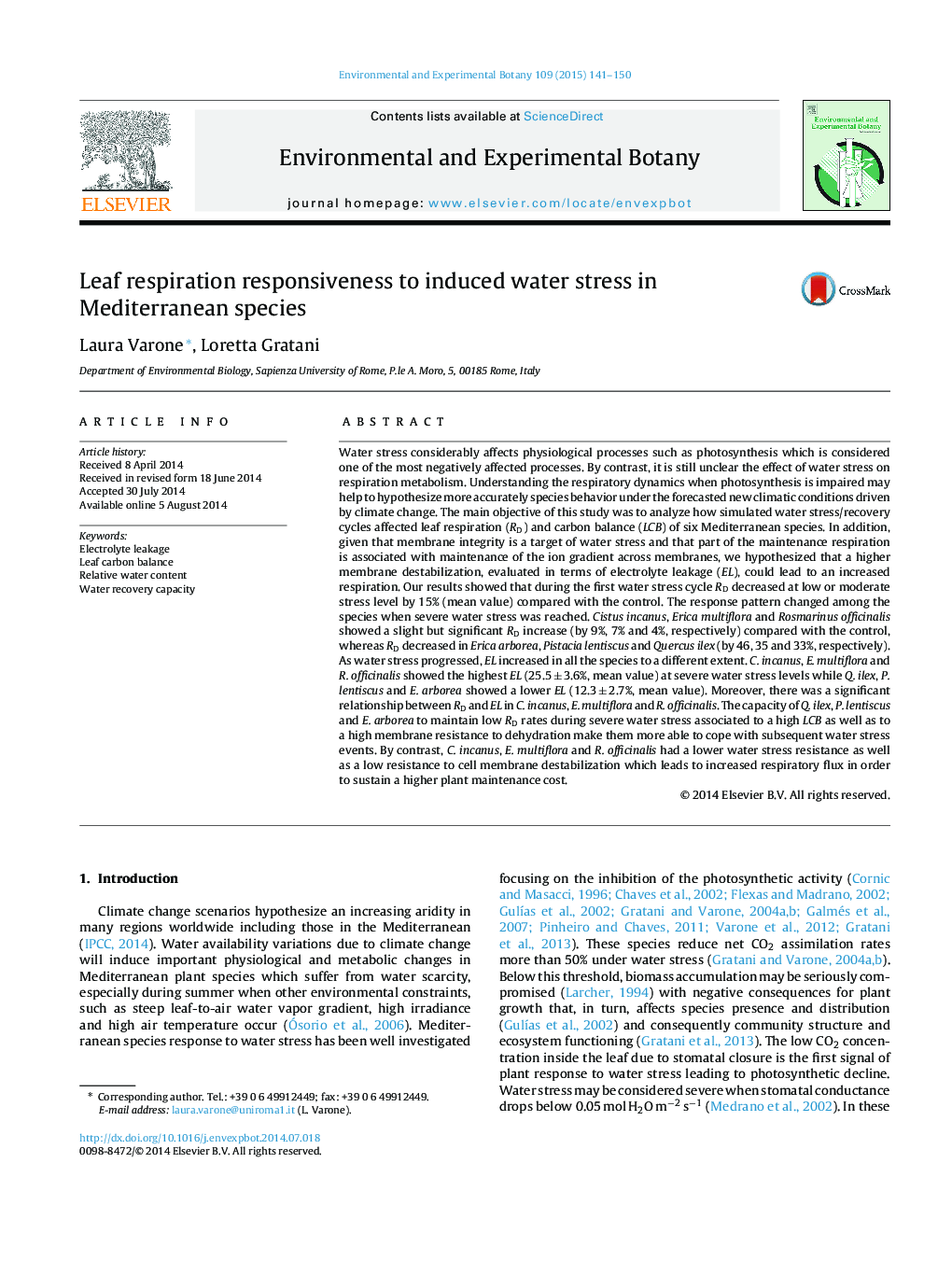| کد مقاله | کد نشریه | سال انتشار | مقاله انگلیسی | نسخه تمام متن |
|---|---|---|---|---|
| 4554327 | 1628068 | 2015 | 10 صفحه PDF | دانلود رایگان |
• Response of leaf dark respiration (RD) to drought was species-specific.
• Species with a lower water stress tolerance had a higher respiration.
• Drought induced electrolyte leakage correlated with RD under severe drought stress.
• Photosynthesis to respiration ratio was not constant changing under water stress.
Water stress considerably affects physiological processes such as photosynthesis which is considered one of the most negatively affected processes. By contrast, it is still unclear the effect of water stress on respiration metabolism. Understanding the respiratory dynamics when photosynthesis is impaired may help to hypothesize more accurately species behavior under the forecasted new climatic conditions driven by climate change. The main objective of this study was to analyze how simulated water stress/recovery cycles affected leaf respiration (RD) and carbon balance (LCB) of six Mediterranean species. In addition, given that membrane integrity is a target of water stress and that part of the maintenance respiration is associated with maintenance of the ion gradient across membranes, we hypothesized that a higher membrane destabilization, evaluated in terms of electrolyte leakage (EL), could lead to an increased respiration. Our results showed that during the first water stress cycle RD decreased at low or moderate stress level by 15% (mean value) compared with the control. The response pattern changed among the species when severe water stress was reached. Cistus incanus, Erica multiflora and Rosmarinus officinalis showed a slight but significant RD increase (by 9%, 7% and 4%, respectively) compared with the control, whereas RD decreased in Erica arborea, Pistacia lentiscus and Quercus ilex (by 46, 35 and 33%, respectively). As water stress progressed, EL increased in all the species to a different extent. C. incanus, E. multiflora and R. officinalis showed the highest EL (25.5 ± 3.6%, mean value) at severe water stress levels while Q. ilex, P. lentiscus and E. arborea showed a lower EL (12.3 ± 2.7%, mean value). Moreover, there was a significant relationship between RD and EL in C. incanus, E. multiflora and R. officinalis. The capacity of Q. ilex, P. lentiscus and E. arborea to maintain low RD rates during severe water stress associated to a high LCB as well as to a high membrane resistance to dehydration make them more able to cope with subsequent water stress events. By contrast, C. incanus, E. multiflora and R. officinalis had a lower water stress resistance as well as a low resistance to cell membrane destabilization which leads to increased respiratory flux in order to sustain a higher plant maintenance cost.
Journal: Environmental and Experimental Botany - Volume 109, January 2015, Pages 141–150
